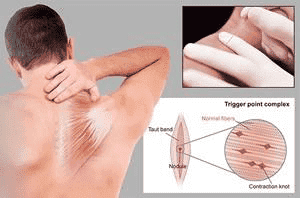Can Dry Needling Cause Diarrhea?
Dry needling, commonly referred to as trigger point dry needling, is a safe and effective treatment for various muscle conditions. It can reduce pain, increase range of motion, and loosen tightened muscles. Physical therapists will identify trigger points and treat them with needles. They may use either superficial (superficial) or deep needling techniques.
1. Diarrhea
Dry needling is an alternative treatment that utilizes thin filiform needles (instead of acupuncture needles) inserted into muscle trigger points to kickstart the body’s natural healing process. Inserting the needle causes a twitch response in muscles which triggers an immune response and increased blood flow to the affected area.
Increased circulation can reduce pain and inflammation. However, there are potential risks to consider with this type of therapy. Fortunately, these risks can be minimized by selecting an experienced practitioner and using the correct technique with appropriate dosages. If you’re interested in trying dry needling to treat your pain, get in touch with Simply Physio today!
Recent research revealed the potential risks of dry needling. To conduct their survey, 39 physical therapists with training in dry needling were asked to complete a survey that recorded their number of treatments and any minor or major adverse effects they experienced during those treatments.
2. Vomiting
Dry needling is a technique utilized by physical therapists and other healthcare providers to treat muscular-skeletal pain and movement problems. It involves inserting thin stainless steel needles – known as filiform needles – into trigger points in order to release muscle knots that cause discomfort.
During the procedure, you may feel a mild prick and twitch response that lasts a few seconds. Additionally, you may feel an occasional aching sensation.
It is essential to keep moving and stretching after treatment in order to reduce any ache or soreness from the procedure. Furthermore, make sure you drink plenty of water and refrain from overexertion following your appointment.
Dry needling is generally safe when performed by a trained therapist, though it’s not advised for those with a history of blood clots or pregnant women. If you experience an adverse effect such as shortness of breath or major bleeding, call your healthcare provider immediately and seek emergency services; though unlikely, this could be life-threatening in the event it does occur.
3. Abdominal pain
Dry needling is a type of trigger point therapy that involves inserting a needle into the muscle. This helps to release any knotted areas within your muscles that could be causing discomfort or altering their mechanics.
Trigger points are typically located deep muscles and may be present with various conditions like low back or neck pain. When released, trigger points reduce pain by improving circulation to the affected muscle.
Your provider carefully inserts a thin, sterile needle into the trigger point to elicit a twitch response and release knotted tissue, allowing your body to relax.
Dry needling is a non-invasive treatment used by physiotherapists to address myofascial trigger points, or painful muscle knots. This procedure has become increasingly popular as an efficient solution to relieving muscle tension without surgery or drugs.
4. Constipation
Dry needling, also referred to as trigger point dry needling or intramuscular stimulation (IMT), is an intervention designed to alleviate pain and movement by loosening knotted muscles. Physiotherapists and other healthcare practitioners utilize this technique for treating various muscle conditions, such as neck and back discomfort.
Sometimes, multiple sessions are necessary to achieve satisfactory results, particularly for chronic or severe conditions. During treatment, a physical therapist inserts a thin needle into targeted trigger points and manipulates them in order to promote healing.
This procedure can be used for a range of issues, from low back pain and shoulder injuries to joint stiffness and arthritic discomfort. It’s an incredibly safe and effective way to relieve discomfort.
Dry needling can help alleviate pain and enhance mobility in many parts of the body, but it should be noted that it may not be suitable for everyone; thus, a thorough evaluation is essential before beginning this treatment. If you have any questions or concerns, please contact us for more information.



